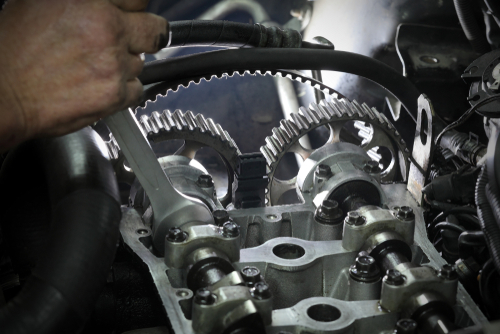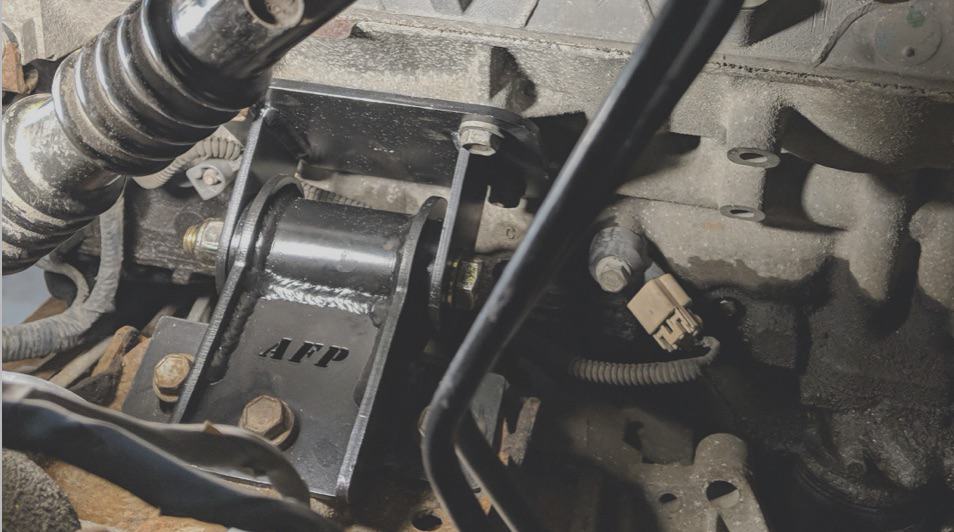Is your check engine light flashing at you like a disgruntled Christmas tree? You might be dealing with the pesky P0025 code, which stands for “B” Camshaft Position – Timing Over-Retarded (Bank 2). Don’t worry, it’s not as complicated as it sounds.

This code pops up when your car’s computer notices that the exhaust camshaft timing on Bank 2 is a bit off its game, running later than it should. Think of it like your engine’s internal clock running slow on one side. It’s not the end of the world, but it’s definitely something you’ll want to address before your engine starts performing its own rendition of a sad trombone.
You might notice your car feeling a bit sluggish or hear some unusual noises under the hood. Your fuel economy might take a hit too, as if your car suddenly developed an expensive taste in premium gas. But fear not, with a little know-how and some elbow grease (or a trusted mechanic), you can get your camshaft timing back on track and your engine purring like a contented kitten.
Key Takeaways
- P0025 indicates an issue with camshaft timing on Bank 2 of your engine
- Symptoms may include reduced performance, unusual engine noises, and decreased fuel efficiency
- Addressing this code promptly can prevent more serious engine damage and costly repairs
Understanding P0025
The P0025 code can be a real headache for car owners. It’s all about your engine’s timing being off, which can lead to some funky performance issues. Let’s break it down so you can get a handle on what’s going on under your hood.
What Is P0025?
P0025 is a diagnostic trouble code that pops up when your car’s computer thinks something’s fishy with the exhaust camshaft timing on bank 2 of your engine. It’s like your car is trying to tell you, “Hey, my timing’s off!”
This code is specific to the exhaust side, which is why it’s called the “B” camshaft. Your engine control module (ECM) is the tattletale here, reporting that the camshaft is lagging behind where it should be.
Over-Retarded Camshaft Timing Explained
When your mechanic says your timing is “over-retarded,” they’re not insulting your car. It means the exhaust valves are opening later than they should. Imagine your engine as a dance, and one partner is consistently stepping on the other’s toes by being late.
This tardiness can cause a whole host of issues:
- Poor fuel economy (your wallet won’t be happy)
- Reduced engine power (goodbye, zippy acceleration)
- Rough idling (that annoying shake at stoplights)
- Increased emissions (Mother Nature gives you the stink eye)
Your variable valve timing system is supposed to keep everything in sync, but when it gets out of whack, P0025 is its way of waving a red flag.
Symptoms and Detection

Spotting the P0025 code can be tricky, but your trusty car has ways of letting you know something’s amiss. Let’s dive into the telltale signs and how to confirm this pesky problem.
Recognizing the Symptoms
Your car might start acting like a grumpy old man if it’s dealing with a P0025 code. Reduced power is a common complaint – suddenly, your zippy ride feels like it’s dragging an anchor.
You might notice some rough idling, as if your engine’s had one too many coffees. Stalling is another fun surprise – nothing like your car playing dead at a stoplight!
Engine misfires are also on the menu. It’s like your car’s doing an impromptu drumroll under the hood. And of course, that pesky engine light might decide to join the party on your dashboard.
Diagnostic Tools and Techniques
Time to play detective! Your first sidekick in this mystery is an OBD-II scanner. This nifty gadget can read the P0025 code and give you a head start on diagnosis.
But don’t stop there! A multimeter can be your best friend for checking sensors and wiring. It’s like a lie detector for your car’s electrical system.
Listen to your engine, too. Unusual noises can be a goldmine of information. And don’t forget to check your car’s maintenance history – sometimes, the clues are hiding in plain sight!
The Heart of the Problem

The Variable Valve Timing (VVT) system is a crucial component in modern engines, and oil plays a vital role in its function. When things go awry with these systems, you might find yourself facing the dreaded P0025 code.
Variable Valve Timing and VCT
You might think of VVT as your engine’s personal yoga instructor, helping it stay flexible and efficient. This system adjusts the timing of your camshafts, allowing your engine to breathe better at different speeds. Variable Camshaft Timing (VCT) is the star pupil in this yoga class.
When your engine’s computer detects that the exhaust camshaft on Bank 2 is more retarded than it should be, it throws a fit – or rather, a P0025 code. This means your camshaft isn’t keeping up with the engine’s demands, like a student sleeping through their alarm.
The camshaft phaser is the muscle behind this operation. It’s responsible for adjusting the camshaft’s position relative to the crankshaft. When it’s not performing its job correctly, your engine’s performance can suffer.
Oil’s Role in the VVT System
Oil isn’t just your engine’s favorite beverage; it’s the lifeblood of the VVT system. The VCT system relies on oil pressure to function properly. Think of it as the hydraulic fluid that powers this intricate dance of engine components.
The oil control valve acts like a traffic cop, directing oil flow to the VCT piston. When this flow is disrupted, your camshaft can’t adjust its timing properly. It’s like trying to do the cha-cha with your shoelaces tied together.
Oil pressure problems can stem from various issues:
- Low oil levels (your engine’s way of going on a hunger strike)
- Dirty or degraded oil (imagine trying to run through a pool of molasses)
- Clogged oil passages (like trying to drink a milkshake through a coffee stirrer)
Mechanics of Repair
Fixing the P0025 code involves a keen eye and some elbow grease. You’ll need to inspect and potentially replace some key components to get your engine purring again.
Visual Inspection
Start by popping the hood and taking a good look around. You’re searching for any obvious signs of wear or damage. Check the timing chain or belt – if it’s loose or worn, that could be your culprit.
Next, examine the camshaft position sensor and its wiring. Any frayed wires or loose connections? Those could be throwing off your timing. Don’t forget to inspect the VVT (Variable Valve Timing) components. A stuck or faulty VVT solenoid might be the reason your camshaft is dragging its feet.
Repairing P0025
Time to roll up your sleeves! First, clear that pesky code and see if it comes back. If it does, you’re in for some parts replacement. The VCT solenoid is often the troublemaker here. Swapping it out might just do the trick.
If that doesn’t solve it, you might need to dive deeper. Check your timing chain or belt – if it’s stretched or worn, it’s time for a replacement. This job can get tricky, so don’t be shy about calling in the pros if you’re not comfortable tackling it yourself.
Consequences and Prevention
Ignoring a P0025 code can lead to some serious headaches for your wallet and your ride. Let’s dive into how this pesky problem affects your car’s performance and what you can do to keep your VVT system purring like a kitten.
Impact on Vehicle Performance
When your camshaft timing is off, your engine’s going to throw a fit. You’ll likely notice your fuel consumption skyrocketing faster than a rocket on steroids. Your poor engine will be working overtime, gulping down gas like it’s going out of style.
But that’s not all, folks! Excessive emissions are another unwelcome guest at this party. Your car might start belching out more pollutants than a 1970s factory.
Poor engine performance? You bet! Your ride might feel as sluggish as a sloth on a Monday morning. Acceleration could become a distant memory, and your engine might start sounding rougher than a cat in a washing machine.
Maintaining Your VVT System
Now, let’s talk prevention. Keeping your VVT system happy isn’t rocket science, but it does require some TLC.
First up: engine oil. This liquid gold is the lifeblood of your VVT system.
Make sure you’re using the right oil viscosity – your owner’s manual is your best friend here.
Regular oil changes are crucial. Don’t skimp on these, or you’ll be penny-wise and pound-foolish.
Fresh oil keeps your VVT system clean and functioning smoothly.
Watch out for contamination! Dirt and debris are the sworn enemies of your VVT system.
A clogged oil filter can wreak havoc faster than a bull in a china shop.
Lastly, keep your ears perked for any unusual engine noises.
If your car starts sounding like a drum solo gone wrong, it might be time for a check-up.
Frequently Asked Questions
When your car’s Check Engine light illuminates due to P0025, you might experience some quirky behavior. Let’s dive into the common questions about this over-relaxed camshaft timing on bank 2.
What delightful gremlins might I encounter if the ol’ ‘Check Engine’ light comes on due to over-retarded camshaft timing on bank 2?
You might notice your engine running a bit rough, like it’s had one too many at the pub.
Poor acceleration could be on the menu, making your car feel sluggish when you’re trying to merge onto the highway.
How is my road companion, the car, going to behave if the camshaft position is more relaxed than I am on a lazy Sunday, say, over-retarded?
Your trusty steed might start misfiring, giving you a bumpy ride that’s less “Sunday drive” and more “rodeo adventure.”
You could also experience a noticeable drop in power, making hill climbs feel like mountain expeditions.
Can you tell me which performance quirks will tip me off that my engine’s camshaft timing is kicking back a tad too far on bank 2?
Keep your ears peeled for unusual engine noises.
You might hear a rattling sound that wasn’t there before, like your engine’s trying to start a percussion band.
Reduced fuel economy could also be a telltale sign, as if your car suddenly developed a drinking problem.
Does having an over-retarded camshaft timing in bank 2 crank up my fuel bill? How will my wallet feel the pinch?
Oh, you bet it does! Your engine’s efficiency takes a nosedive, gulping down more fuel than necessary.
It’s like your car’s developed a expensive taste for premium cocktails instead of its usual diet soda.
I’ve heard whisperings about this camshaft voodoo magic – can a not-so-advanced timing on bank 2 be the cause of my motor’s heartburn?
Indeed, it can! Over-retarded camshaft timing can lead to incomplete combustion, causing unburned fuel to sneak past the cylinders.
This can result in damage to your catalytic converter, which is about as fun (and expensive) as it sounds.
How can I savvy up and pinpoint the mysterious case of my engine’s sluggish performance and could the infamous ‘P0025’ be the perpetrator?
First, get yourself an OBD-II scanner. It’s like a detective’s magnifying glass for your car.
If it shows P0025, you’re on the right track.
Next, check your oil levels and quality.
Low or dirty oil can cause camshaft timing issues faster than you can say “oil change.”
